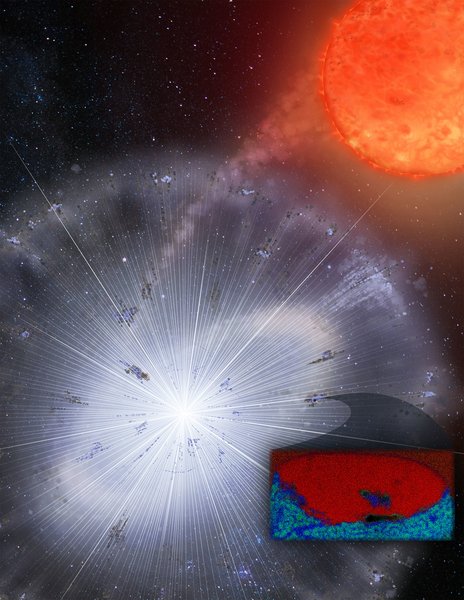Looking into the Solar System's Past Using Stardust

Image: Heather Roper/University of Arizona
Presolar grains, also referred to as stardust, are microscopic specks found within meteorites, that have been formed in stars predating the existence of our solar system. Pierre Haenecour and his team have studied a presolar grain, named LAP-149, that is believed to have been formed in a nova. Lap-149 was found it to contain both silicate material as well as graphite a combination not thought possible to be formed by the same nova.
Novae are stellar events in which a white dwarf in a binary star system pulls material from its partner. With enough build up of material, the white dwarf will occasionally flare, creating new elements while flinging them off into the far reaches of space.
On the carbon content of the grain, Haenecour said "The carbon isotopic compositions in anything we have ever sampled that came from any planet or body in our solar system varies typically by a factor on the order of 50." In regards to the uniqueness of LAP-149's carbon content, Haenecour continued, "the 13C we found in LAP-149 is enriched more than 50,000-fold. These results provide further laboratory evidence that both carbon- and oxygen-rich grains from novae contributed to the building blocks of our solar system."
Read more: University of Arizona